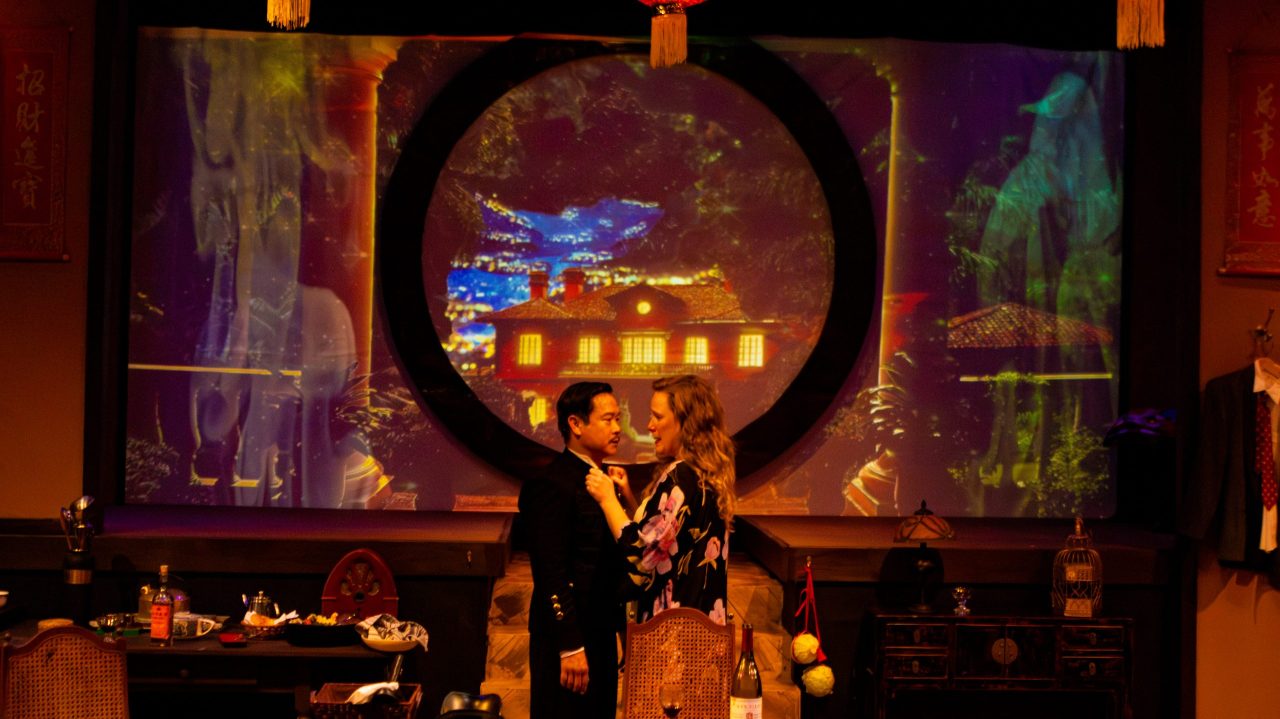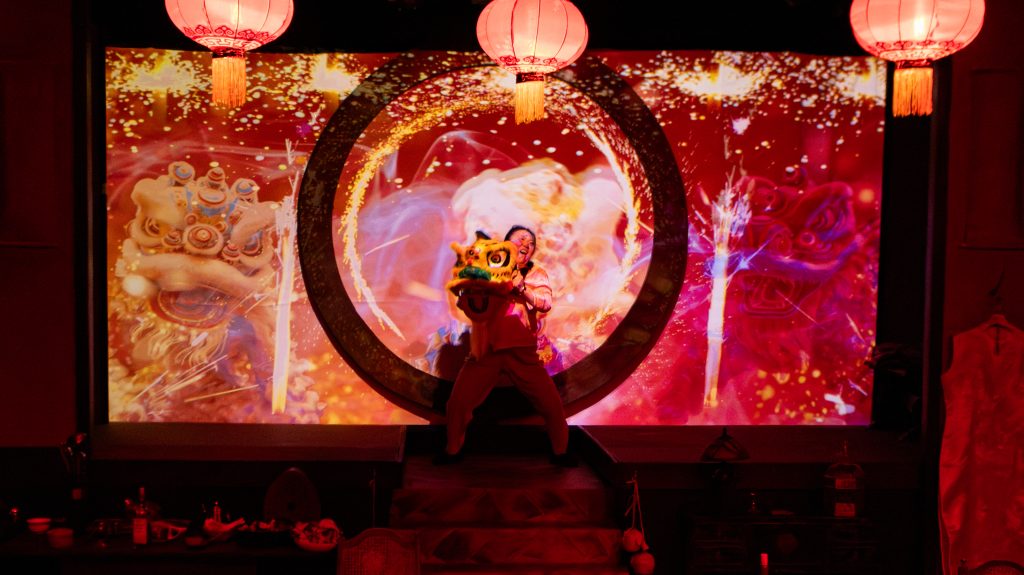PICT’s “Miss Julie:” A Triangle with Four Sides

Modern adaptations of classic plays often look like someone wearing borrowed clothes: they don’t fit quite right, and it’s obvious that the person wearing them had to struggle to put them on. But when an adaptation of a play like August Strindberg’s “Miss Julie” (1888) really does justice to its antecedent and fits the subject matter – such as in PICT’s current production at Carnegie Stage — we as the audience get a double reward . . . not just an engaging evening of drama, but also the chance to reevaluate a work we thought we knew, recast in a startlingly fresh paradigm.
And the paradigm is indeed fresh in several important ways. This is only the second offering of the reconstituted PICT (the acronym now stands for Pittsburgh International Classic Theatre), and newly appointed artistic director Elizabeth Elias Huffman, who is originally from Pittsburgh (and Monongahela, no less – you can’t get more credible Yinzer bona fides than that) is refocusing the company’s mission to “telling classical stories through an international lens.” Based on this show, we should be in for some exciting times.

This version, by Amy Ng, moves the story from Strindberg’s Sweden of the late 19th century, to Hong Kong in 1948. The action concerns a love triangle between the daughter of a British tycoon, Miss Julie (Shelby Garrett), her father’s chauffeur John (Trieu Tran), and the household cook, Christine (Yan Pang). Without explicating too much of the plot, I’ll simply say that Ms. Ng captures Strindberg’s exploration of passive-aggressive love and makes it just as relatable to her characters, as she, like Strindberg, understands that the universal is revealed in the particular, which is a lesson many contemporary playwrights get backwards.
This production also adds a new character, the ghostly “Auntie” (Mimi Jong) who floats across the stage as a kind of mute observer – embodying a fourth side to this triangle — only breaking the silence by playing the erhu, a two-string Chinese instrument that complements the ethereal tone of the drama, and evokes an interiority that these souls constantly try to suppress or ignore.
With a static set, changes in time are achieved by the backdrop projections created by Natalie Rose Mabry — which manifest the muted exuberance of ancient Chinese woodblock prints — as well as the nuanced lighting enhancements designed by Bob Steineck. As this is a play that exists in two realms, one that is spoken and one that is imagined (the playwright even has one of the characters use the word “transmogrify”), these treatments are essential to the understanding of the emotions the characters are experiencing, but not always expressing.

Miss Julie, at 20-years-old, aspires to be the ingenue, and often acts like one, but Ms. Garrett projects a sense of gravity that makes the fate of her actions believably tragic, without appearing fatuous. In concert with this, her love-object, John, as evinced by Mr. Tran, is able to navigate the changing state of her mind, while at the same time balancing the amorous demands of Christine, who, as portrayed by Ms. Pang, is motivated by equally quixotic forces. When they all occupy the room at the same time it’s like watching a game of Pong speed up as the characters come closer together. In fact, in Stindberg’s original stage directions, he actually uses the term “tempo prestissimo” to signal the rhythmic speed he desires, and which director Elias Huffman honors.
Underlying all of this are Steve Shapiro’s sound designs, which coalesces aurally what we are experiencing visually – he’s one of the few sound professionals I’ve encountered who can make faraway noises, like the chirping of birds, sound distant, not just lower in volume. Also crucial to the success of the production is the work of scenic designer Tuker Topel, who puts us in mid-century Hong Kong in a believable and compelling manner.
What I admire most about PICT’s evocation of this drama is that it isn’t afraid of its own strangeness, and that this quality has not been diluted in its adaptation. You don’t find many plays that explore issues such as canine miscegenation, for example. But what Ms. Ng has done, most profoundly, is to make an entirely new play out of a prior one, instead of simply dropping characters and plot lines from one into the other, which always leaves an ill-fitting impression. What we come away with is the essence of Strindberg’s genius coupled with the risk of an entirely new way to view that genius, which is what all successful resurrections should accomplish.
MISS JULIE continues through May 4th at Carnegie Stage, 25 West Main Street, Carnegie, PA, $20 – $40. 818-438-8418 or www.picttheater.org


